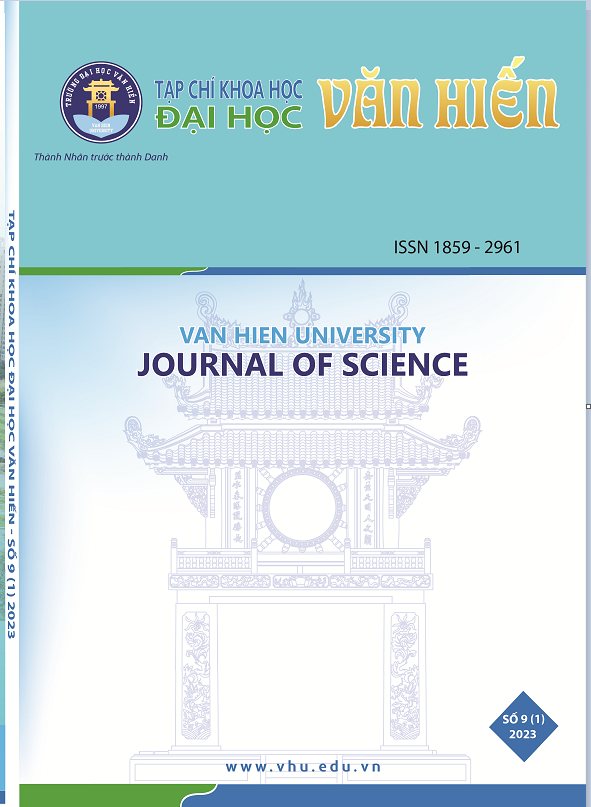Shinden Zukuri - Unique Japanese fine arts of Heian era
Main Article Content
Abstract
Article Details
References
Đặng Thái Hoàng, Nguyễn Văn Đỉnh, Vũ Thị Ngọc Anh, Đỗ Trọng Chung, Lương Thị Hiền, Nguyễn Hồng Hương, Trương Ngọc Lân, và Nguyễn Mạnh Trí (2009). Văn hóa và kiến trúc phương Đông. Hà Nội, Nxb Xây dựng.
Fujita, M. (2021). 平安貴族の住ま. Nơi sinh sống của quý tộc Heian. Nhật Bản, Nxb Yoshikawa Kobunkan.
Kato, Y. (2009). 『家屋雑考』の流布と「寝殿造」の定着過程. Sự phổ biến của tác phẩm Kaoku-zakko và quá trình định hình nên phong cách Shinden Zukuri. Tuyển tập Nghiên cứu của Hiệp hội Kiến trúc Nhật Bản, tập 74(646): 2701-2707. https://doi.org/10.3130/aija.74.2701
Kawahara, T. (1993). 王朝文学に見る平安時代の庭園生活に関する研究 (I). Nghiên cứu về những sinh hoạt thường ngày trong vườn cảnh thời kỳ Heian thông qua văn học cung đình (I). Tạp chí Hiệp hội làm vườn Nhật Bản, 1993(1): 6-16. https://doi.org/10.5982/jgarden.1993.6
Morita, N., Akazawa, M., và Korenaga, Y. (2011). 源氏物語の住文化とその受容史に関する研究: 理想の住空間としての建築・しつらい・作庭. Nghiên cứu về văn hóa cư trú trong Truyện Genji và lịch sử tiếp nhận: Kiến trúc - sự phối trí - vườn cảnh tạo nên không gian sống lý tưởng. Tuyển tập các bài báo Nghiên cứu của Tổ chức Nghiên cứu nhà ở, 37: 297-308. https://doi.org/10.20803/jusokenold.37.0_297
Murasaki, S. (-). Truyện kể Genji. (Tập 1). Nguyễn Đức Diệu dịch (1991). Hà Nội, Nxb Khoa học Xã hội. (The Tale of Genji, Translated by Edward G. Seidensticker (1976), Tokyo, Charles E. Tuttle Company).
Nguyễn Quốc Hùng (Chủ biên), Đặng Xuân Kháng, Nguyễn Văn Kim, và Phan Hải Linh (2007). Lịch sử Nhật Bản. Hà Nội, Nxb Thế giới.
Mason, R.H.P., and Caiger, J.G. (1997). A history of Japan. Nguyễn Văn Sỹ dịch (2003). Lịch sử Nhật Bản. Hà Nội, Nxb Lao động.



